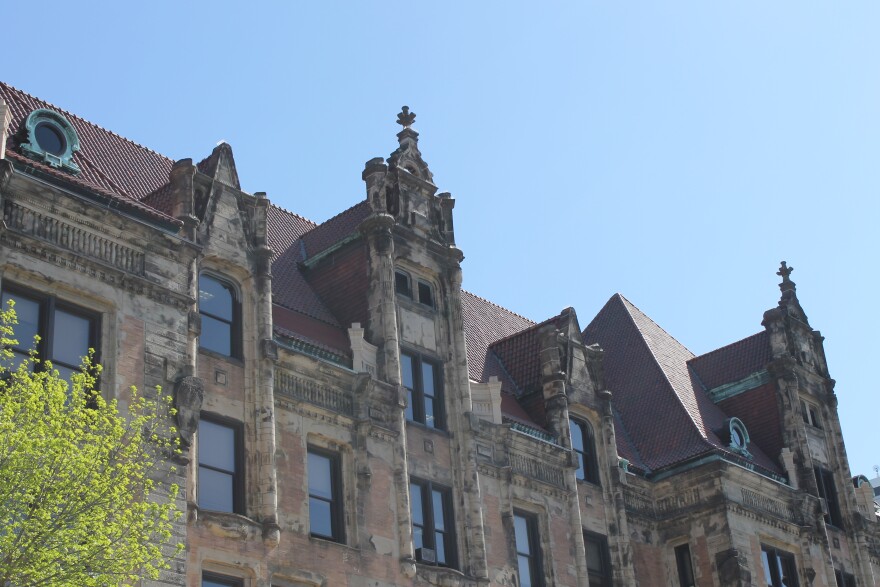Operators of St. Louis buildings larger than 50,000 square feet will soon face penalties if they don’t report energy and water use to the city.
The city’s benchmarking ordinance, which went into effect in 2017, requires owners of municipal and privately owned buildings to report energy and water consumption to the St. Louis Building Division. City officials will levy fines and deny occupancy permits to buildings that don’t comply within 60 days of receiving a warning letter.
The penalties strengthen an ordinance that aims to cut greenhouse gas emissions that cause climate change.
Buildings produce 77% of St. Louis’ emissions, according to a 2015 report from the city’s sustainability office.
Benchmarking, or tracking energy use, can help owners make decisions that lower operating costs and improve public health, said Rajiv Ravulapati, a St. Louis Building Division analyst.
“If a building is more efficient, if there’s more ventilation, people can literally breathe better; workers are more productive,” Ravulapati said.
Building owners who do not provide energy and water data could be fined $50 to $200 per citation. The fines would not exceed a total of $1,000 annually. The city will begin issuing citations this December.
The city reported this week that 484 buildings, less than half the buildings required to comply with the ordinance, provided data on energy and water use in 2017. When city officials studied the data, they found that municipal buildings were significantly more energy efficient than privately owned buildings. The study also found that offices, hotels, multifamily housing and hospitals were among the highest energy consumers.
Officials used a scoring system from the Environmental Protection Agency and Department of Energy’s Energy Star program to evaluate energy consumption. If all the large municipal and privately owned buildings aimed for Energy Star certification, the city could cut more than 11% of its greenhouse gas emissions and save $61.5 million, according to the city’s report.
The upfront costs of upgrading lighting, HVAC and other systems are the largest barrier to improving energy efficiency, Ravulapati said. The city and the U.S. Green Building Council’s Missouri Gateway chapter organizes seminars to provide operators resources, such as rebate programs, that help with such costs.
The city is making major upgrades to the City Justice Center, St. Louis Metropolitan Police Department’s headquarters, Juvenile Courts Center and Carnahan Courthouse. The work, funded through a $1.3 million Missouri Division of Energy Loan, is expected to help save $509,000 annually and recoup the cost of investment in less than three years.
“Getting folks to, you know, actually understand these energy-efficiency measures have a short payback can do tremendous public health savings, cost savings for the building,” Ravulapati said.
The 206,000-square-foot Embassy Suites hotel in downtown St. Louis has participated in the city’s benchmarking program. In recent years, the hotel has installed solar panels, low-flow showerheads and LED light bulbs, said Chris Meinert, the hotel’s chief engineer.
“The LED bulbs produce almost no heat whatsoever. The other light bulbs would get so hot they’d burn the ballast up in those things,” Meinert said. “[Using LED bulbs] cut down on maintenance costs.”
Follow Eli on Twitter: @StoriesByEli
Send questions and comments about this story to feedback@stlpublicradio.org


